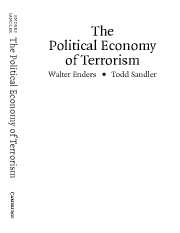Book contents
- Frontmatter
- Contents
- List of Tables and Figures
- Preface
- 1 Terrorism : An Introduction
- 2 The Dilemma of Liberal Democracies
- 3 Statistical Studies and Terrorist Behavior
- 4 Counterterrorism
- 5 Transference
- 6 International Cooperation : Dilemma and Inhibitors
- 7 Hostage Taking
- 8 After 9/11
- 9 The Economic Impact of Transnational Terrorism
- 10 Homeland Security
- 11 The Future of Terrorism
- References
- Author Index
- Subject Index
- References
References
Published online by Cambridge University Press: 06 July 2010
- Frontmatter
- Contents
- List of Tables and Figures
- Preface
- 1 Terrorism : An Introduction
- 2 The Dilemma of Liberal Democracies
- 3 Statistical Studies and Terrorist Behavior
- 4 Counterterrorism
- 5 Transference
- 6 International Cooperation : Dilemma and Inhibitors
- 7 Hostage Taking
- 8 After 9/11
- 9 The Economic Impact of Transnational Terrorism
- 10 Homeland Security
- 11 The Future of Terrorism
- References
- Author Index
- Subject Index
- References
- Type
- Chapter
- Information
- The Political Economy of Terrorism , pp. 259 - 268Publisher: Cambridge University PressPrint publication year: 2005



